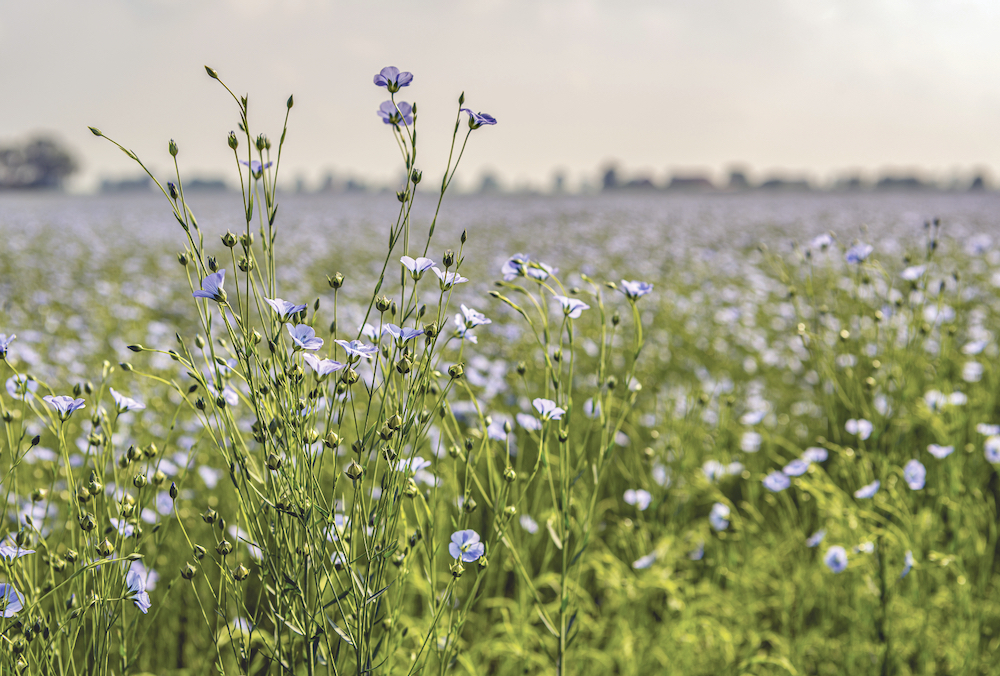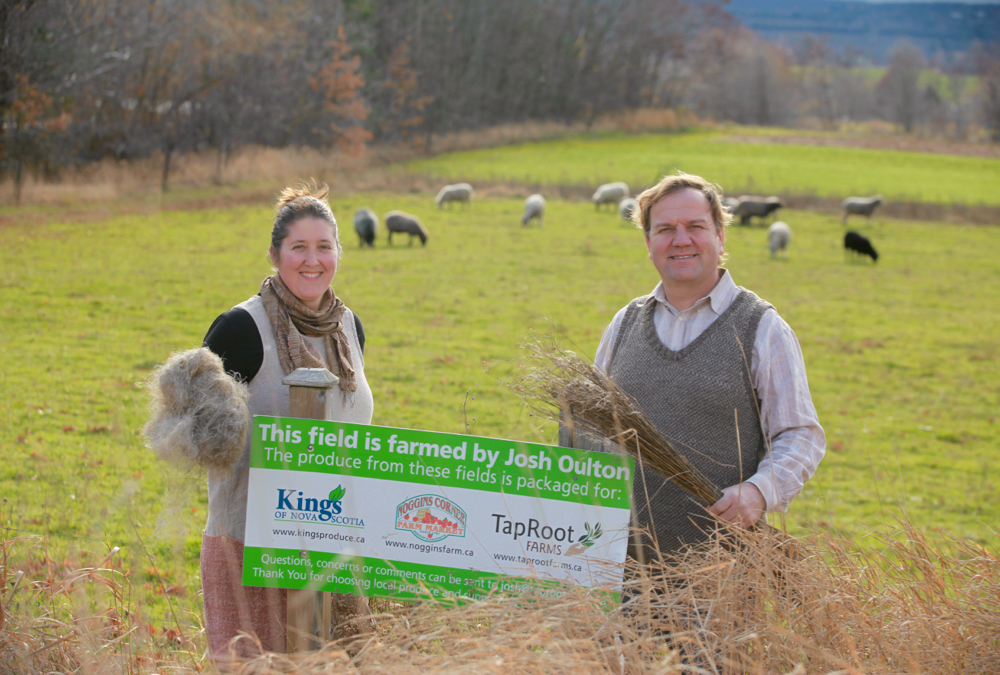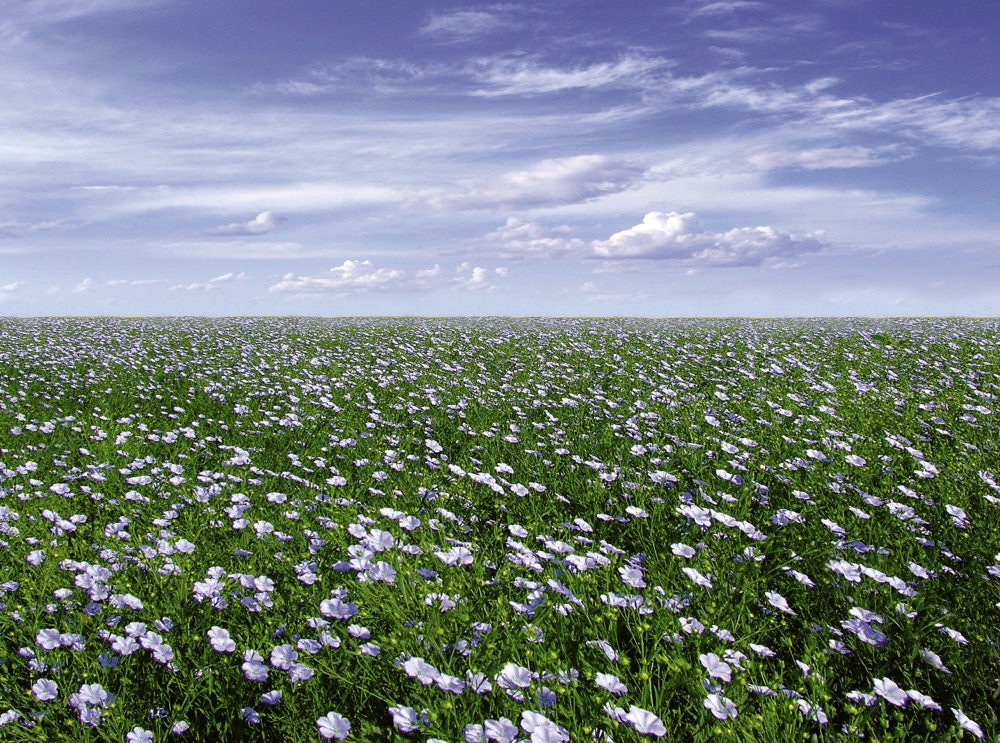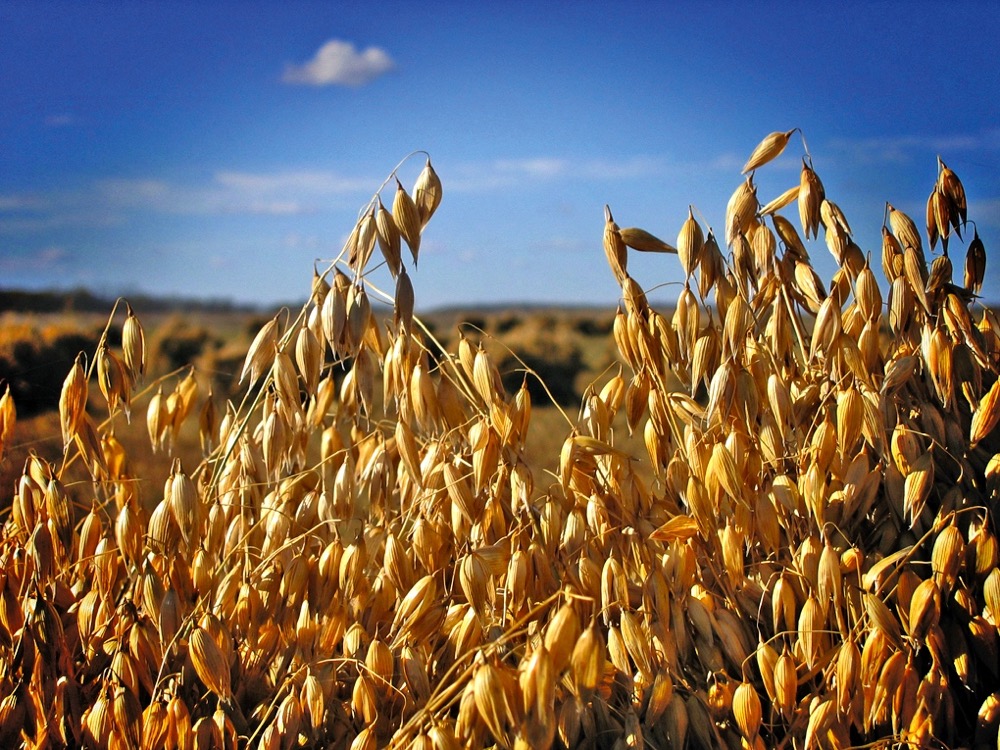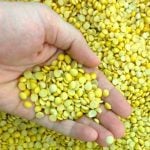It’s been getting tougher for photographers to capture that iconic shot of adjoining fields of blooming flax and canola. There’s no shortage of yellow flowers, but Prairie flax area, recently averaging about 900,000 acres, is less than half of its heyday in the 1970s and 1980s. Last year’s area dropped even further to 775,000 acres, despite prices well into the $30 per bushel range as seeding season approached.
That sounds attractive until you consider yield — while per-bushel prices may run at over double those for wheat, the recent Prairie average of 25 bushels doesn’t. The difference is especially stark in Saskatchewan, where about 80 per cent is now grown — the five-year average there is only 20.5 bushels per acre.
But flax remains a profitable option for farmers and important in rotations to mitigate insect and disease pests, says Wayne Thompson, CEO of the Flax Council of Canada and executive director of the Saskatchewan Flax Development Commission (SaskFlax).
Read Also
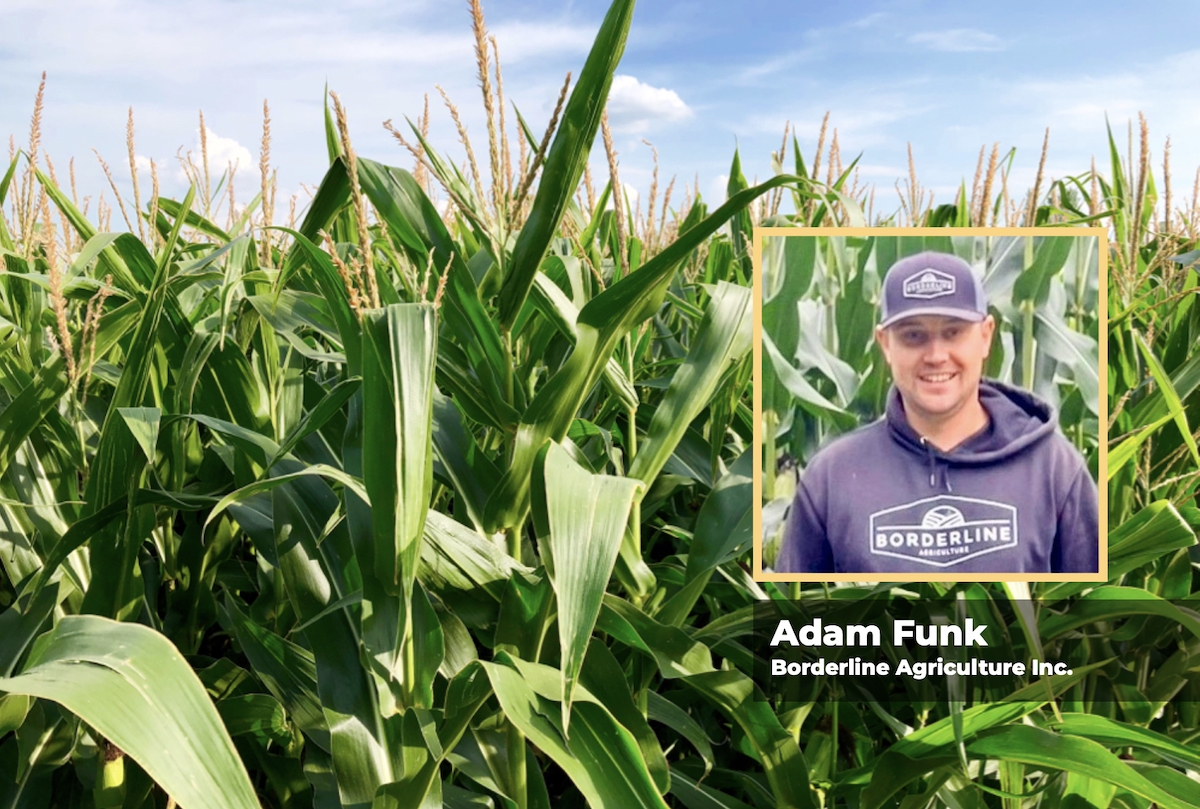
Agronomists share tips for evaluating new crop products and tech: Pt. 3
With new products, new production practices and new technology converging on the agriculture industry at a frenetic pace in recent…
“When it comes to rotation, farmers will definitely be looking at what’s in demand and flax fits into the rotation for breaking that disease and insect cycle. It’s still a profitable crop for farmers to consider. It depends on how everything else pencils out on the farm.”
Flax is less agronomically competitive, making it more of a specialty crop, says Bruce Burnett, director of markets and weather at MarketsFarm. But boosting yields won’t necessarily make flax more attractive to growers, because demand is flat.
“Improving the productivity in a finite demand environment that means lower prices, which means you’re less competitive with some of your alternatives,” Burnett says.
If average Canadian flax yields jumped 20 per cent, Canadian acreage would likely decline as much, he says.
“I would say the demand for Canadian product is fairly flat because of that fact that we have some competitors out there that compete fairly well into what we used to think of as our regular markets and I doubt that we can recover those to be honest,” Burnett says.
Russia and Kazakhstan are Canada’s main flax competitors, Thompson says.
“They have definitely put the pressure on Canadian marketshare around the world,” he says. “Kazakhstan is supplying a lot of the European market and right now a lot of Russian flax would be supplying the Chinese demand, so that has definitely hindered Canadian exports to the European Union and Chinese market in the last year.”
Russia and Kazakhstan are low-cost producers with a geographic advantage over Canada.
These days United States is Canada’s biggest export market for flax and that’s expected to continue, say Thompson and Burnett.

Triffid’s lingering impact
Canada’s flax exports to Europe suffered a heavy blow in 2009 when minute traces of genetically modified Triffid flax were found in shipments. Although Triffid was approved in Canada, it wasn’t commercialized over fears it could kill exports. That’s what happened.
But after several years and a lot of effort, traces of GM flax were scrubbed from Canada’s supply and exports resumed, but testing continues and growers are urged to remain vigilant.
“We want to ensure that our Canadian production remains Triffid-free,” Thompson says. “Because the detections have been zero from the information I have we are confident that the risk is very low for Triffid in our production, however, we need to maintain the testing. We encourage farmers to watch what they are growing and make sure that they’re replenishing their seed with certified seed as often as possible to continue to maintain Triffid-free production.”
Market access
Thompson says the council has been working on market access over the past year.
“The Chinese government implemented some new regulations for importing several products, including flax. We worked with our members and traders of flax to be sure they had access to that market.
“For many years, Canadian flax had easier access to the Chinese market. In recent years both Russian and Kazakhstan flax was limited as to what could be imported into China, but over the last three or four years those quotas have been increased so Russia and Kazakhstan are able to export more flax than they used to into the Chinese market.”
Meanwhile, the council, in co-operation with the Canadian government, is lobbying the EU not to introduce regulations restricting cadmium and hydrocyanic acid levels in flax.
Linseed oil is still used for industrial purposes such as paint and linoleum, but flax, which is high in heart-healthy omega-3 fatty acids, is increasingly used in the human, livestock and pet food markets.
“Consumers are demanding more healthy products and flax fits in with that very well,” says Thompson. “The demand for flax as an industrial product … is still an important market for us and a significant part of the market, but there is definitely becoming a balance between the two markets and the food market is driving the demand for flax today.”
Transition
Keeping markets open and boosting demand for Canadian flax are key priorities for the Flax Council of Canada, which has undergone five years of transition. It began in December 2017 when Richardson International, one of the council’s major funders, announced it wasn’t renewing its membership. After 32 years of operation, the council closed its Winnipeg headquarters and in 2018 announced it was restructuring its board and joining forces with the Canola Council of Canada. However, flax council members soon agreed there was a need for a stand-alone entity.
Thompson says the council represents a cross-section of the industry.
“The members are significant players in the flax trade and represent a good cross-section of who is trading and processing flax,” Thompson says. “The producers are represented through the Manitoba Crop Alliance and the Saskatchewan Flax Development Commission. There has been some growth in membership, and we will continue to explore opportunities with companies and encourage them to become members of the Flax Council of Canada.”
Agronomy resources
SaskFlax’s website (saskflax.com) has an extensive range of agronomic information. The “Growing Flax” tab has links to a comprehensive growing guide and separate sections on seeding, fertilizing, and pest and disease control. The “Flax on the Farm” section links to monthly articles on timely agronomic practices through the growing season. SaskFlax also has a staff agronomist: Anne Nerbas, (306) 664-1901, [email protected].



